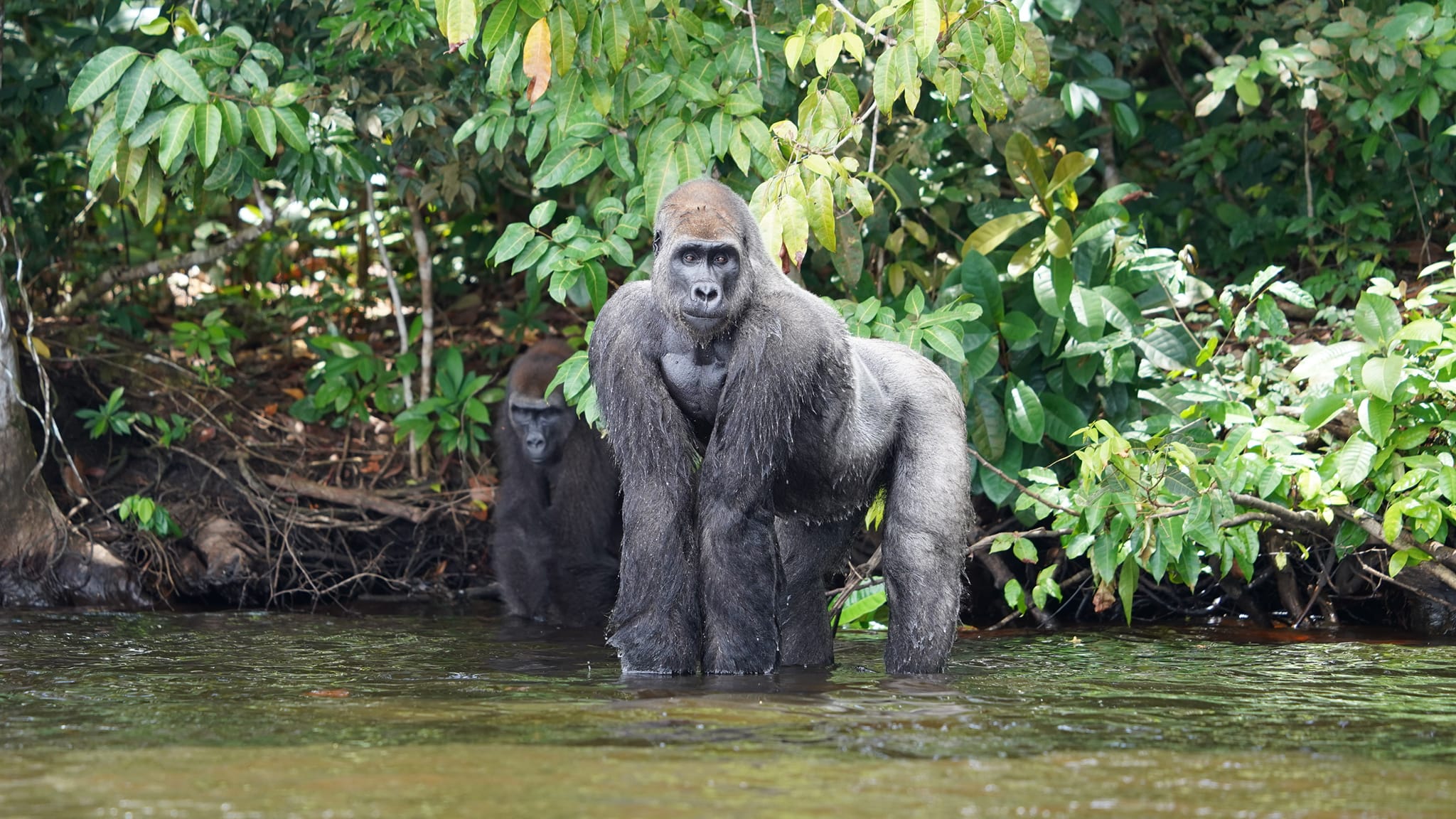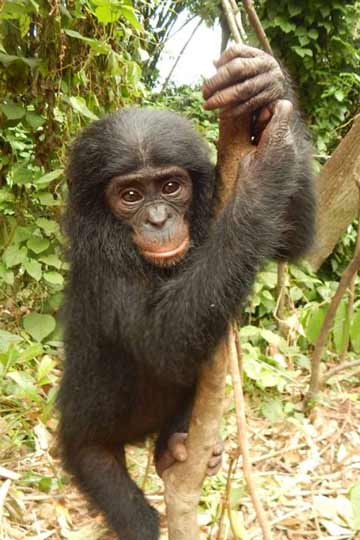What is an Endangered Species?
This article explains what it means to be “endangered” and explores how human activities can threaten species. It also highlights how Pan African Sanctuary Alliance (PASA) member centers rescue, rehabilitate, and conserve endangered primates and their habitats.
By: Alexandra J. Reddy
You have probably heard the word “endangered” before, but do you know what it really means? It means that a group of similar living things, called a “species,” may be at risk of disappearing forever. ‘Endangered’ comes from an Old French word that means “to put in danger.” Unfortunately, it is thought that at least 42,000 species are endangered. Each species is unique and important in its own way, so it is important that people try to protect as many of them as possible.
Species can become endangered when their populations start to decline and there are not enough individuals left to keep their species going. There are many reasons why this can happen. One of the biggest reasons is because of humans. People sometimes destroy the habitats where animals live by cutting down forests, polluting the air or water, or building cities and roads that disrupt the animals’ natural homes.
In addition, when animals are hunted too much, they may not be able to reproduce enough to keep their species going. Climate change can also threaten the survival of species. When the climate changes too quickly, animals may not be able to adapt fast enough to survive in their changing environments.

Gorilla populations have been reduced due to the loss of their habitat, diseases, and hunting. Most subspecies of gorillas are considered to be critically endangered, which means they are at very high risk of becoming extinct in the wild. Photo by Sean Bellon, Projet Gorille Fernan-Vaz in Gabon.
Although humans have had a detrimental impact on animal species worldwide, we have the ability to join forces and help to safeguard endangered species. Scientists, conservationists and concerned individuals are making efforts to protect endangered wildlife in need. In order to do so, it is helpful to recognize that endangered species can be categorized into several stages. These include the following:
Least Concern: Species that are not currently in danger of extinction and their populations are stable or even increasing.
Near Threatened: Species that are not yet endangered but are at risk of becoming so in the future.
Vulnerable: Species that are likely to become endangered if current threats continue or worsen.
Endangered: Species that are facing a high risk of extinction in the wild.
Critically Endangered: Species that are at an extremely high risk of extinction in the wild.
Extinct in the Wild: Species that are no longer found in the wild, but still exist under human care.
Extinct: Species that no longer exist anywhere on Earth.
Now that we have laid out these different categories, let’s take note of the conservation status of primates at Pan African Sanctuary Alliance (PASA) member centers, and learn how PASA is working to protect endangered primates.
Endangered Primates & PASA Efforts
PASA member centers provide a safe haven for more than 3000 great apes and monkeys, belonging to a range of species such as bonobos (considered Endangered), chimpanzees (also Endangered), gorillas (with most species being Critically Endangered), mandrills (considered Vulnerable), colobus monkeys (also Vulnerable) and several other monkey species.
PASA includes 23 accredited wildlife sanctuaries across Africa. These sanctuaries are committed to providing immediate care and rescuing and rehabilitating primates that have been orphaned or injured, as well as conserving their habitats. In some cases, primates can be released back into the wild, giving them the chance to thrive in their natural environment. Protecting individual animals can have a positive impact on the survival of the species. PASA’s goal is to create a future where Africa’s primates can thrive once more in their natural habitat.
A major threat to Africa’s primates is the unlawful hunting of apes and monkeys for food. While consumption of wildmeat, or bushmeat, is an ancient practice for subsistence in some places, commercialization and overexploitation has created a dire situation. Hunters are now killing entire primate communities and selling their meat for profit in cities. Commercial wildmeat markets and urban demand – both within Africa and abroad – are leading to hunting levels never seen before. When a family of primates is hunted for meat, the babies are often kept alive and sold into the illegal pet trade, which is a significant threat to ape populations. PASA members work with law enforcement agencies to arrest wildlife traffickers, confiscate illegally captured animals, and give them lifelong care.

PASA member Lola Ya Bonobo is a sanctuary dedicated to rescuing and rehabilitating orphaned bonobos, a species that is considered to be critically endangered. Photo by Friends of Bonobos.
PASA members also offer environmental education and alternative livelihood programs that bring living wages to local communities. These programs provide opportunities for people to earn a living in ways that do not involve poaching, trafficking, or exploiting habitats. Some of these initiatives include sustainable farming, beekeeping, and reforestation, just to name a few.
Are you interested in helping PASA’s efforts to rescue, rehabilitate, and conserve endangered African primates and their habitats? With your help, we can change the trajectory for Africa’s great apes and monkeys. Your donation and efforts to spread the word about PASA can help save lives of endangered primates!
